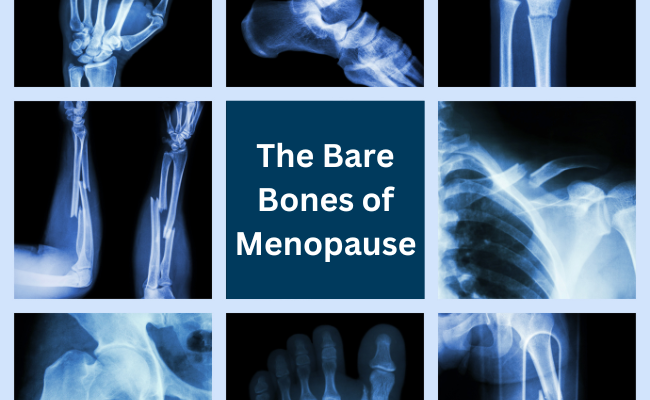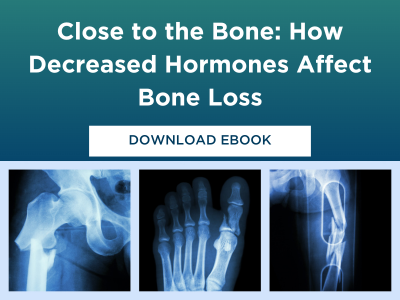
The Bare Bones of Menopause

by Cherie Constance
May 8, 2023
Menopause significantly speeds up bone loss and increases the risk of osteoporosis. Research indicates that up to 20% of bone loss can happen during this stage and approximately 1 in 10 women over the age of 60 are affected by osteoporosis worldwide. In fact, one in two postmenopausal women will have osteoporosis, and most will suffer a fracture (broken bone) during their lifetime. This is extremely important as fractures have long lasting and deleterious effects such as acute and chronic pain, limited mobility and function, and a decreased quality of life and increased mortality.
This all takes place because the subsequent estrogen deficiency caused by menopause increases the rate of bone remodeling and leads to an imbalance between bone breakdown and formation, resulting in net bone loss and ultimately osteoporosis.
To find a doctor near you, simply search the Bio-Identical Hormone Therapy (BHRT) Provider Directory.
Table of Contents
How Hormones Help
As we age this remodeling is balanced, meaning we build more bone than we lose, however after the age of 35, bone breakdown occurs faster while the bone building slows down, meaning we experience a higher level of bone loss. After menopause the rate of bone breakdown speeds up even faster. As this intricate system breaks down, “holes” in the inner, spongy part of the bone grow larger and more numerous, which weakens the inside of the bone, causing osteoporosis. Because of this sex hormones have been at the forefront of research regarding treating or halting osteoporosis altogether.
Estrogen
Research shows that long-term use of estrogen in appropriate doses reduces the risk of hip fractures by 50% to 60% and the risk of vertebral deformation by 90%. This protective effect is maintained as long as estrogen is taken and adequate levels of biologically active estrogen are achieved.
Progesterone
Estrogen never works alone in the female body and has a “physiological partner,” progesterone, that consistently collaborates in every cell and tissue. The bone is no exception. Research has shown that progesterone increases osteoblast numbers as well as its effects to promote osteoblast maturation and differentiation.
Testosterone
Through direct androgenic activity and transforming into estrogens, androgens modulate the bone-remodeling cycle. They also increase muscle mass and strength and induce mechanical factors that alter the balance between bone resorption, favoring formation. The net result is increased bone mass and strength.
Prevention is Worth a Pound of Cure
As with many disease states associated with aging, osteoporosis is influenced by hormones. Numerous studies have shown that hormone replacement therapy rapidly normalizes turnover, preserves bone mineral density at all skeletal sites, which leads to a significant reduction in fractures. The Women’s Health Initiative (WHI) randomized controlled trial proved hormonal therapy reduces the incidence of all osteoporosis-related fractures in postmenopausal women.
Prevention is key in osteoporosis and fracture reduction and taking hormones at the onset of menopause is crucial to both the prevention of osteoporosis and maintaining long-term bone health.
Sources:
Manolagas SC, Jilka RL. Mechanisms of disease: bone marrow, cytokines, and bone remodeling—emerging insights into the pathophysiology of osteoporosis. N Engl J Med. 1995; 332: 305-311.
Consensus development conference: diagnosis, prophylaxis, and treatment of osteoporosis. Am J Med. 1993 Jun;94(6):646-50.
Cooper C, Melton LJ. Vertebral fractures. BMJ. 1992 Mar 28;304(6830):793-4.
Melton LJ 3rd. How many women have osteoporosis now? J Bone Miner Res. 1995 Feb;10(2):175-7.
Albright f, Smith PH, Richardson AM. Postmenopausal osteoporosis: its clinical features. JAMA. 1941;116(22):2465–2474.
